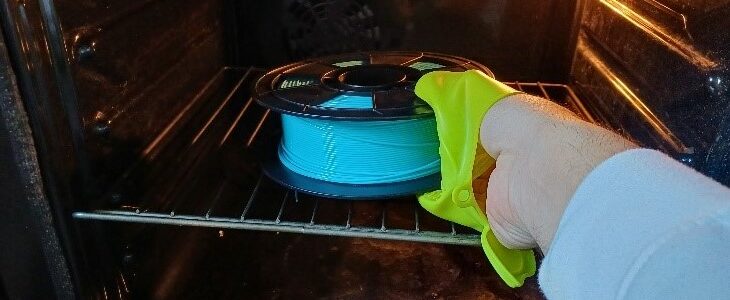16/01/24

3D printing filaments are polymers, so they can degrade under certain conditions. Humidity is an important factor to take into account to ensure good printing and avoid damaging your printer.
Many filaments, such as PLA, absorb moisture easily. Wet filament degrades and becomes brittle when heated in the extruder. This results in less polished printed parts, higher extrusion temperatures, etc.
There are a number of solutions for different price ranges that allow you to store your spools in good condition.
We’ve all noticed that there’s always a little bag in the coils we buy. They often end up in the garbage can. Silica beads help absorb moisture, and keeping them in watertight storage will be a big help.
A plastic box, easily found in DIY stores, is an inexpensive solution. Make sure it closes properly and/or has a seal to prevent contact with moisture in the air. Don’t forget to add a few sachets of silica beads to ensure a dry environment in your box.
The filaments we order from a supplier are always in vacuum bags. This can be a low-cost alternative, provided you find the right size for your coil.
You can put your coils through the kitchen’s must-have oven. If your filament is already loaded with moisture, a simple bag of silica won’t do the trick, and an oven is quite expensive. If you’ve got an old oven lying around, don’t throw it out, but there are several criteria to consider:
PLA and other polymers each have their own Tg, so there are no nasty surprises. A filament with a Tg of over 80°C can be baked at 60°C for an hour. Conversely, if the Tg is below 80°C, the temperature should not exceed 30°C for 3 to 4 hours.Of course, keeping an eye on your coils remains an essential action to avoid a pastic cake.